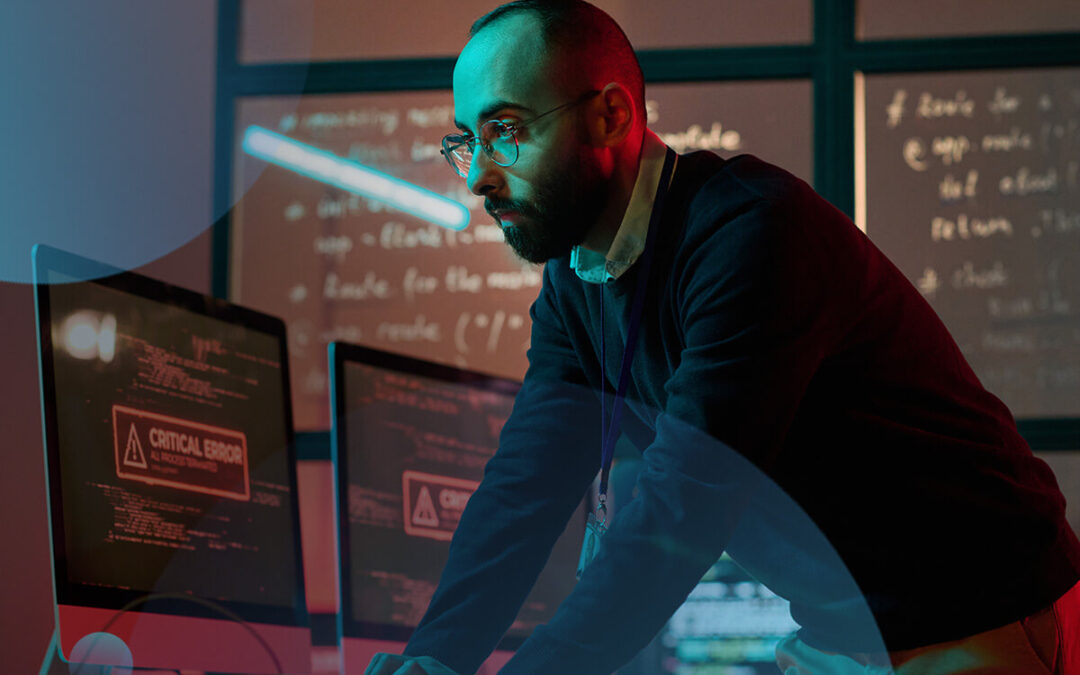I posted on LinkedIn back in February about the cost of a ransomware attack and I used a graphic to show people what $2,000,000 in cash looks like. You can Google search “Floyd Mayweather $2M” and you’ll find the photo. In the picture you can see Mr. Mayweather with a...
Application Development for Interactive Exhibits

Challenge
In April 2016, the CBTS Application Solutions team met with the client to discuss client’s need for custom interactive software to support a new exhibit that was opening in four months.
Client needed software that would provide visitors a deeply immersive experience; support a heavy volume of users; and provide the client’s staff with the necessary infrastructure to easily manage and update the exhibits.
Some of the key technical challenges and needs included:
- Fluid touch-screen interaction.
- Use of standard programming techniques and tools.
- 4K display / touch-screen interaction for a Timeline exhibit.
- High-definition video capturing the Story Station exhibit booths.
- A custom Content Management System (CMS) that will allow the client to maintain database-driven content and approve videos prior to public release.
- Children’s Online Privacy Protection Rule (COPPA) compliance to protect content created by visitors under the age of 13.
- Infrastructure to support heavy interactive use among high volume of customers.
Solution
CBTS leveraged the following technologies to accomplish the client’s objectives on budget and on time:
- Each workstation runs as a dedicated Central Processing Unit (CPU) using the Windows 10 operating system and solid state drives.
- For the front-end technology, all exhibits were developed in HTML5 / CSS3 using various JavaScript frameworks and libraries to handle the desired interactions.
- For the back-end technology, a Microsoft WebAPI RESTful service handles all exhibits’ interaction with the database, video uploads, notifications, and cloud-based content sync with the local CPUs.
- The custom Content Management System (CMS) was developed in Microsoft MVC .NET and is hosted in the cloud.
- The database server is the Microsoft SQL Server, also hosted in the cloud for ease of scaling in / out based on demand.
- Microsoft SendGrid provides the platform for automated e-mails to visitors.
- Google Chrome is the dedicated browser to run the HTML5 software and provides the necessary support for experimental video interaction with high-definition camera devices and full kiosk control.
Results
Three separate interactive exhibits were developed for the client:
The Timeline
- 75” 4k multi-touch display.
- Database-driven historical events.
- Visitor can swipe through the years, touch a specific year for more information, and interact with the multiple events for that given year through videos and other content.
Humanitarian Awards
- Two 32” high-definition, multi-touch display monitors.
- Database-driven interactive tabs for each annual Humanitarian Awards event.
- Visitors can learn the history behind the awards and also watch all videos of the ceremonies for any given year, including performances and inspiring videos on award recipients.
Story Stations
- Five 32” high-definition, multi-touch display monitors, plus 1080p high-definition cameras and sound isolated microphones.
- Visitors create and watch inspirational videos of themselves and other visitors.
- This interactive experience allows up to 3 visitors in one booth to share their experiences with
the world.
Related Stories
Schedule a complimentary
30-minute consultation with an engineer
Join the Conversation!
Related Solutions
















